Free Phonics Assessment for the Beginning and End of the Year: A Fun, Easy Guide for K-2 Teachers
If you’ve ever tried to assess phonics skills in a room full of wiggly Kindergartners or chatty second graders, you know it can feel a little like herding cats while juggling flashcards. Assessment season? More like caffeination season. But don’t worry—we’ve got a solution that doesn’t involve extra coffee or chaos: FREE Phonics Assessment Activity that makes progress monitoring simple, efficient, and dare I say... a little bit fun. In this blog, we’ll walk you through how to use phonics assessments at the start and end of the year, how to keep them stress-free, and how this FREE resource (yes, free!) can become your new classroom BFF. Whether you’re teaching Kindergarten, First Grade, or Second Grade, this assessment tool is the phonics check-in you didn’t know you needed.
Why Do Phonics Assessments Matter? Let’s be real—phonics isn’t just a fancy buzzword educators throw around in PD meetings. It’s the foundation of reading, and without it, students can’t decode, blend, or read fluently. That’s why assessing phonics knowledge early (and again later!) helps you:
- Identify strengths and gaps
- Group students for targeted instruction
- Monitor progress over time
- Show off those shiny data points during conferences or IEP meetings
Plus, when done right, phonics assessments can be low-prep, quick to administer, and even confidence-boosting for your students.
When Should You Assess? There are two ideal times to assess phonics:
- Beginning of the Year – Start strong by getting a snapshot of your students' current skills. Think of it like a reading "health check."
- End of the Year – Celebrate progress! See how far your students have come and use the data to help the next grade level start off on the right foot.
Pro tip: Don’t wait until June when everyone’s brain is half in vacation mode. Give yourself a little wiggle room by assessing in late April or early May.
So What’s in the FREE Phonics Assessment? This resource isn’t just a one-pager. It’s packed with activities that check for a wide range of reading skills that K-2 students need. Here’s what it includes:
1. Alphabet Worksheet (Identify the Beginning Sound) A great way to check if students know their letter sounds. It’s simple: say the picture, circle the letter. Boom. Done. You’ll quickly see who’s ready to read and who’s still calling C a banana.
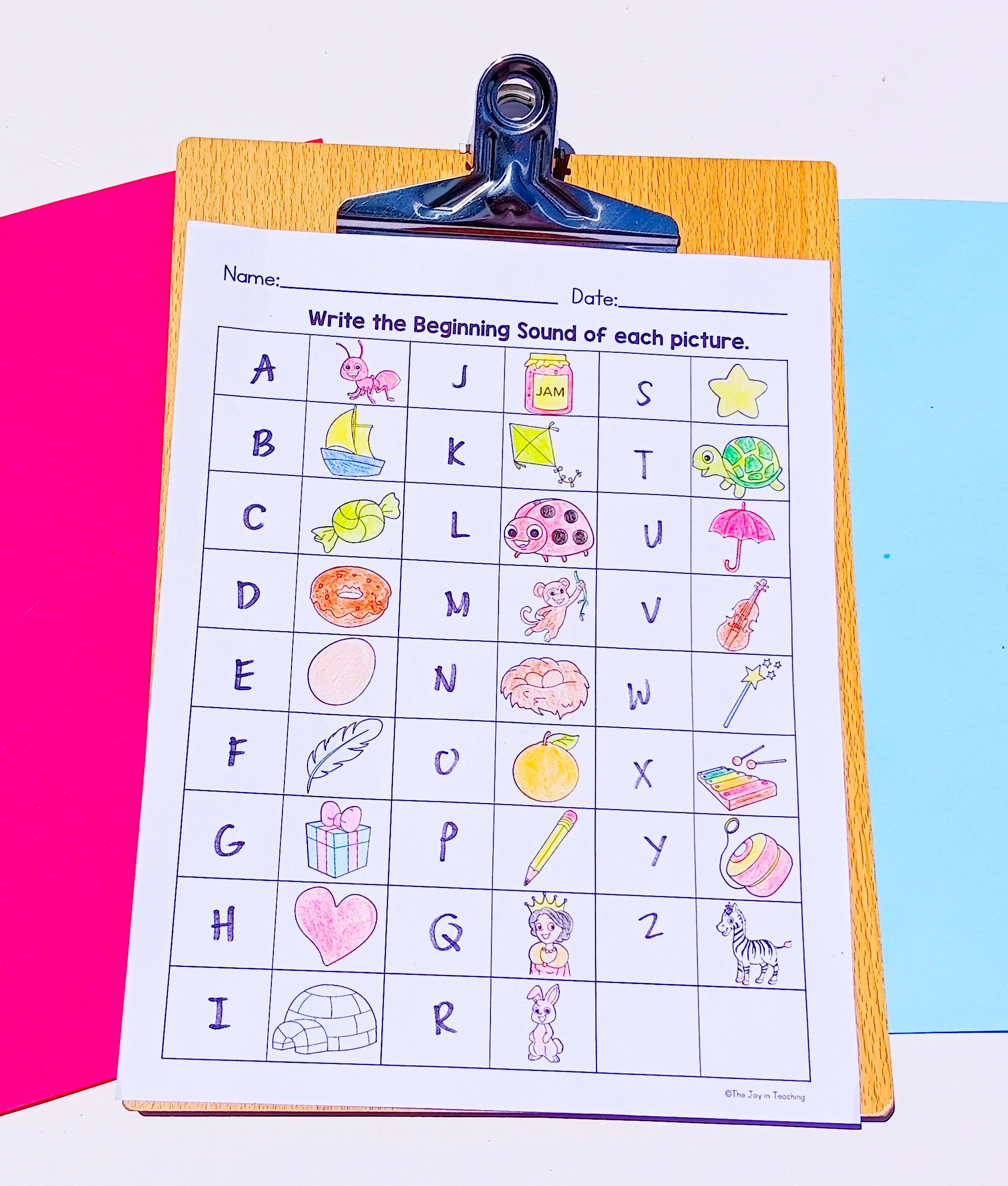
2. CVC Rhyming Worksheet Can your students tell that “cat” and “hat” are best friends? Rhyming is a key early literacy skill that supports phonemic awareness and helps students play with language.
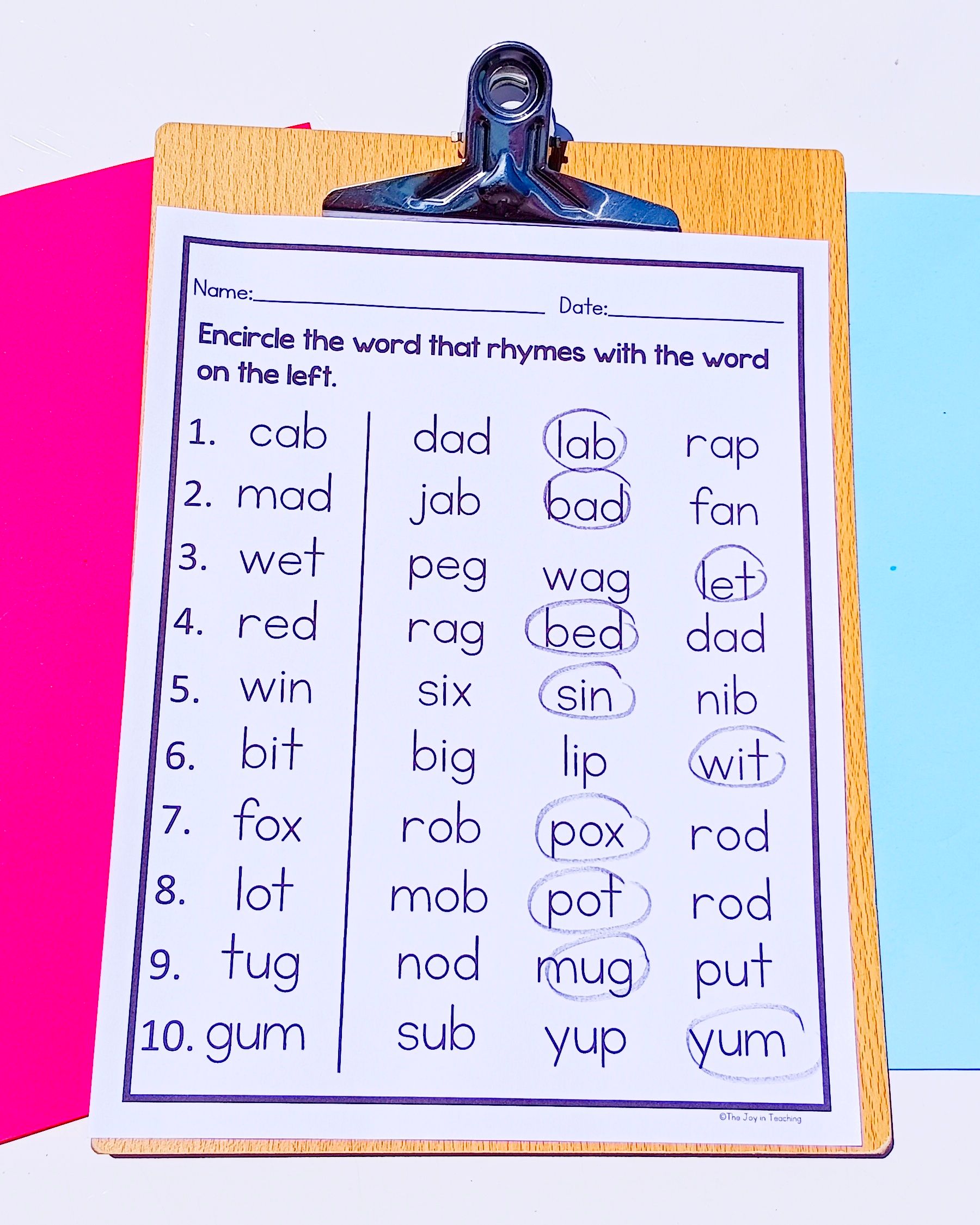
3. R-Controlled Vowel Worksheet (Complete the Word) Ar, or, er—oh my! This worksheet tests whether students can hear and spell those tricky R-controlled sounds. It’s a great tool to see who’s ready to move on to more complex decoding.
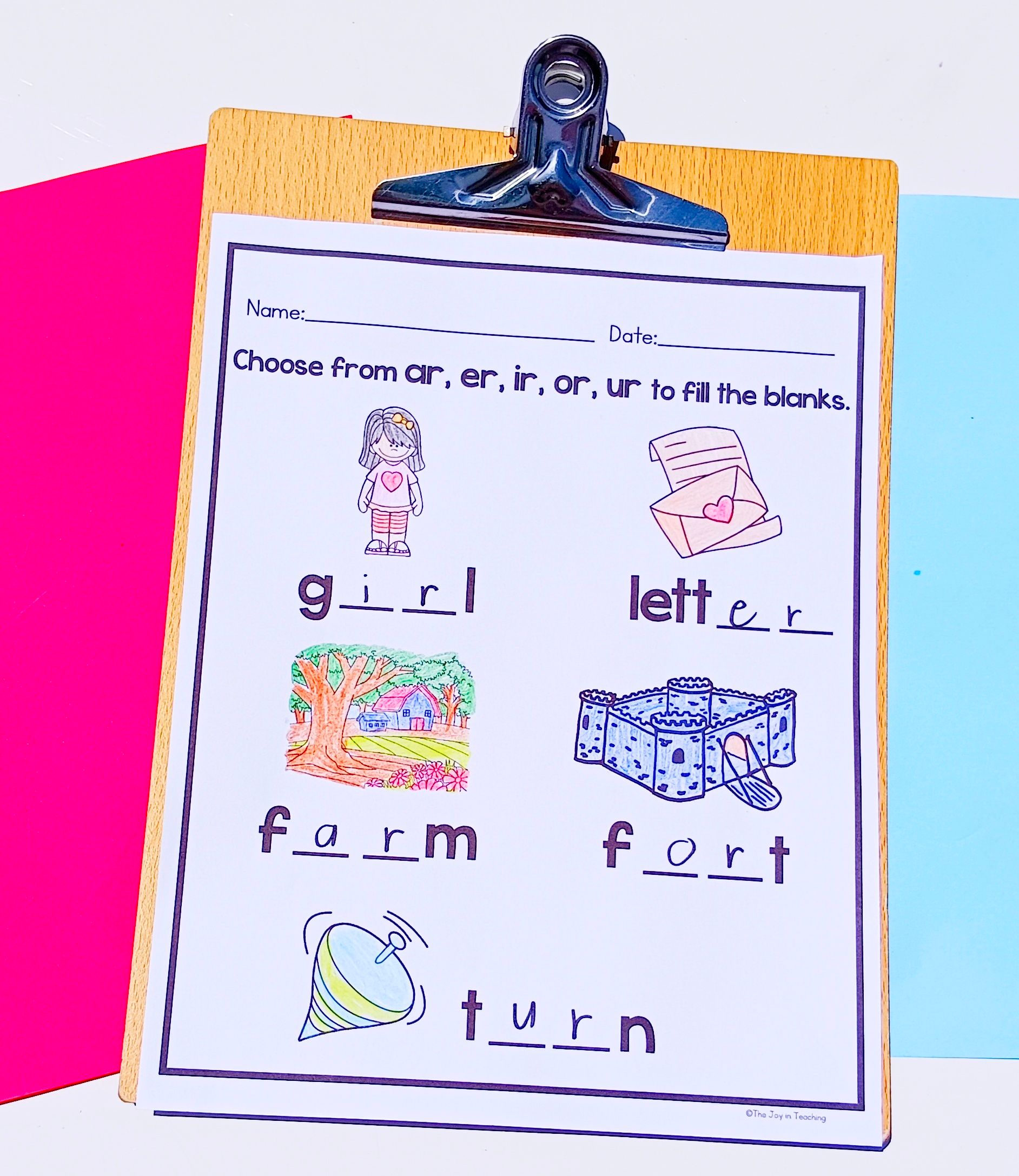
4. Beginning Blends Worksheets (Encircle the Correct Blend) Two pages of blend fun! Can they tell the difference between bl, cl, and fl? These worksheets help identify students who are ready for blend instruction—and those who might need a little extra TLC.
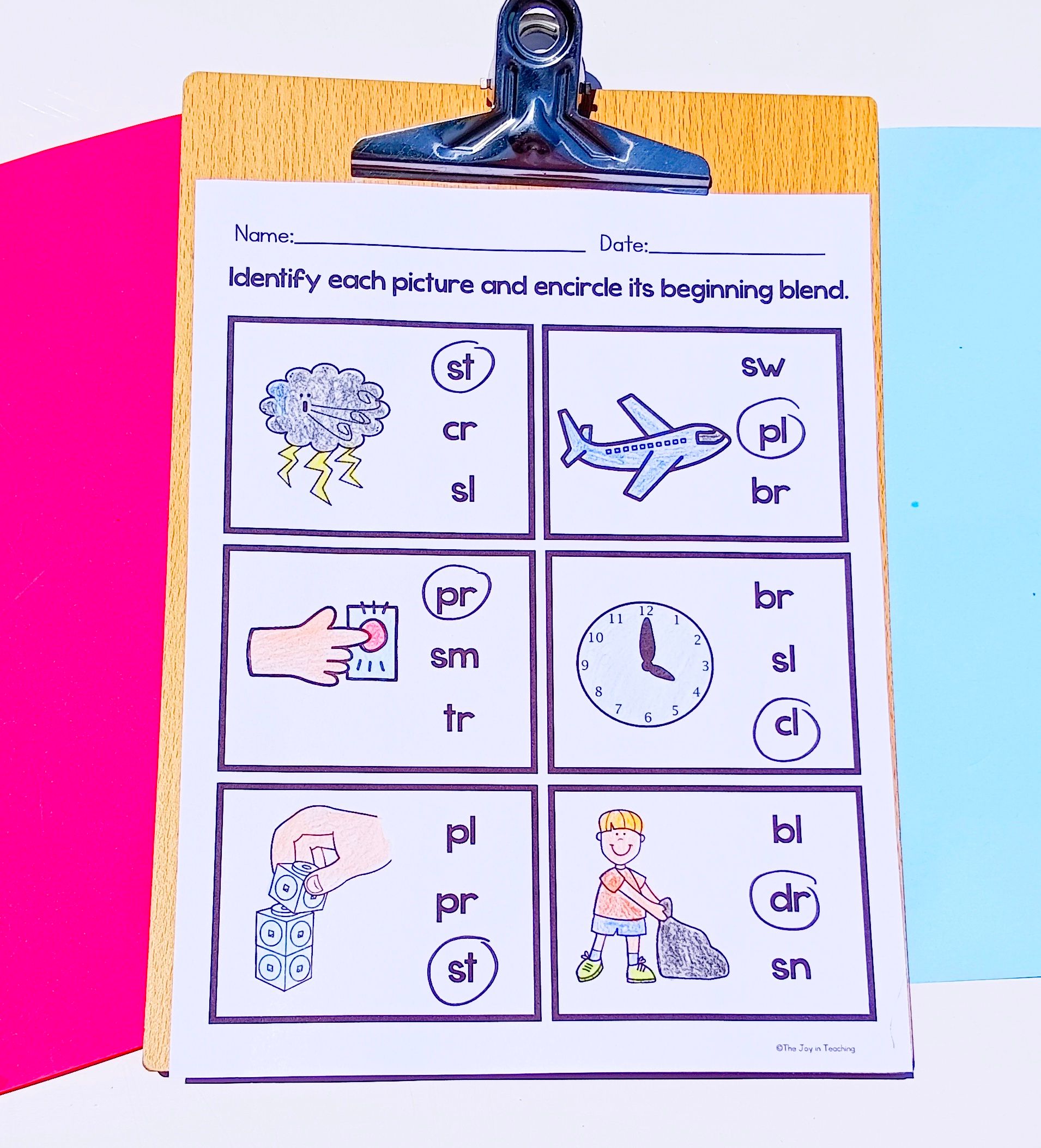
6. Ending Blends Worksheets (Encircle the Correct Blend)
Two pages of blend fun at the end of words! 🎉 Can your students spot the difference between nd, st, and mp? These worksheets make it easy to see who has mastered ending blends and who might need just a little extra practice and support.
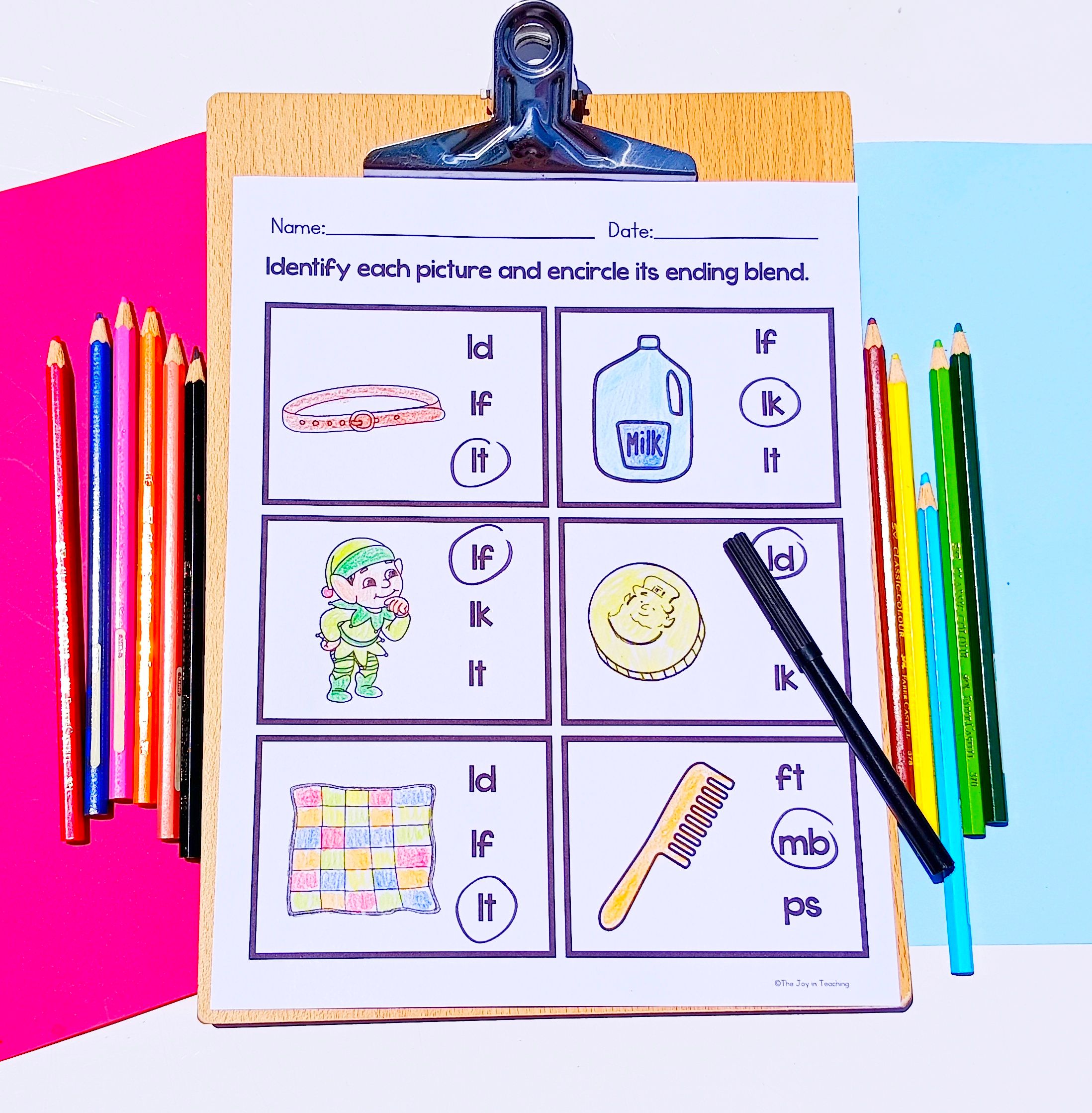
7. Digraph Worksheet (Complete the Word) Can your students tell the difference between “ship” and “sip”? This worksheet is all about identifying and using digraphs like sh, ch, th, and wh in context.
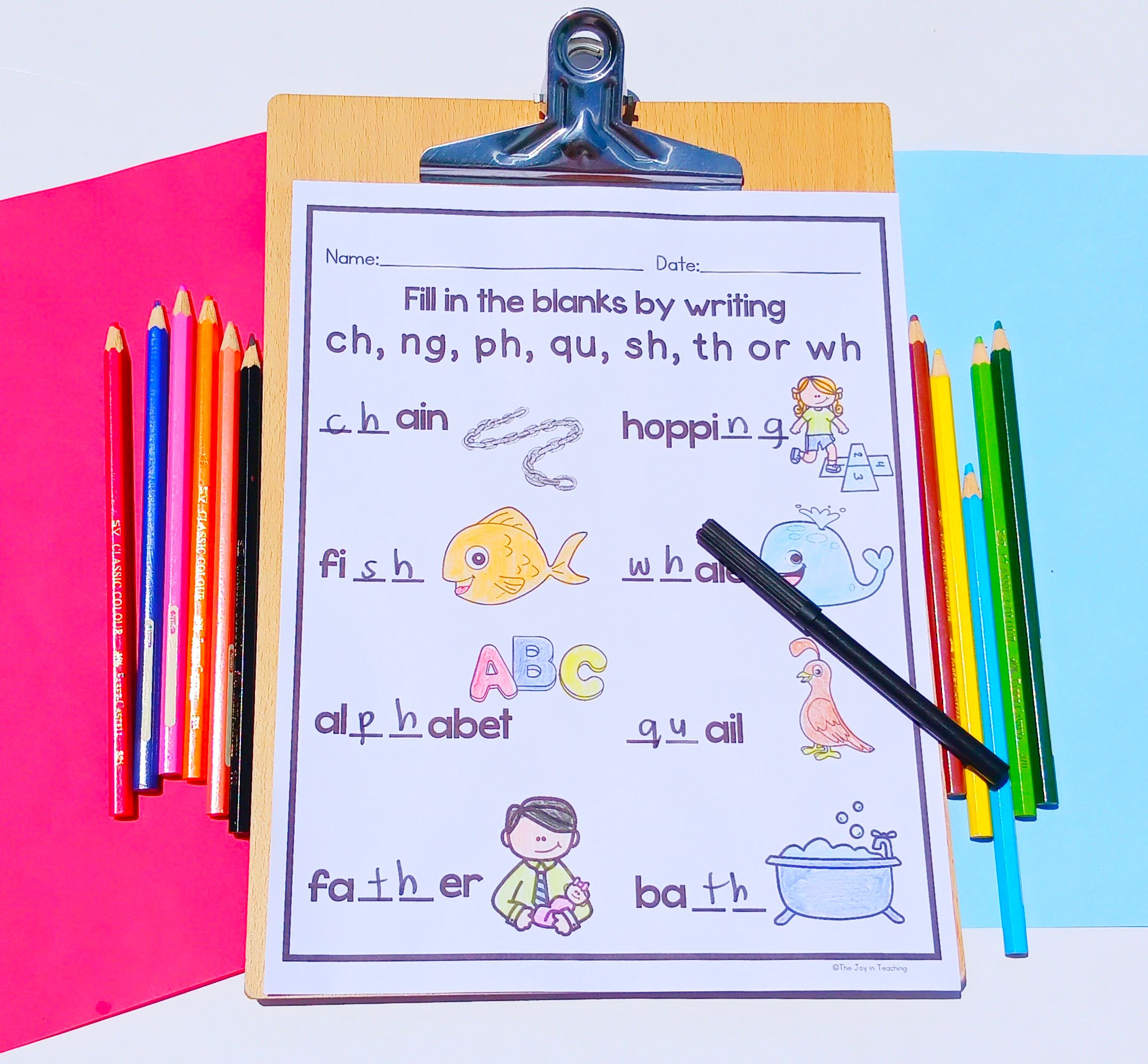
8. Trigraph Worksheet (Complete the Word) Yes, we’re going big here. Three-letter blends like scr and str are included to see how advanced your students’ decoding skills really are.
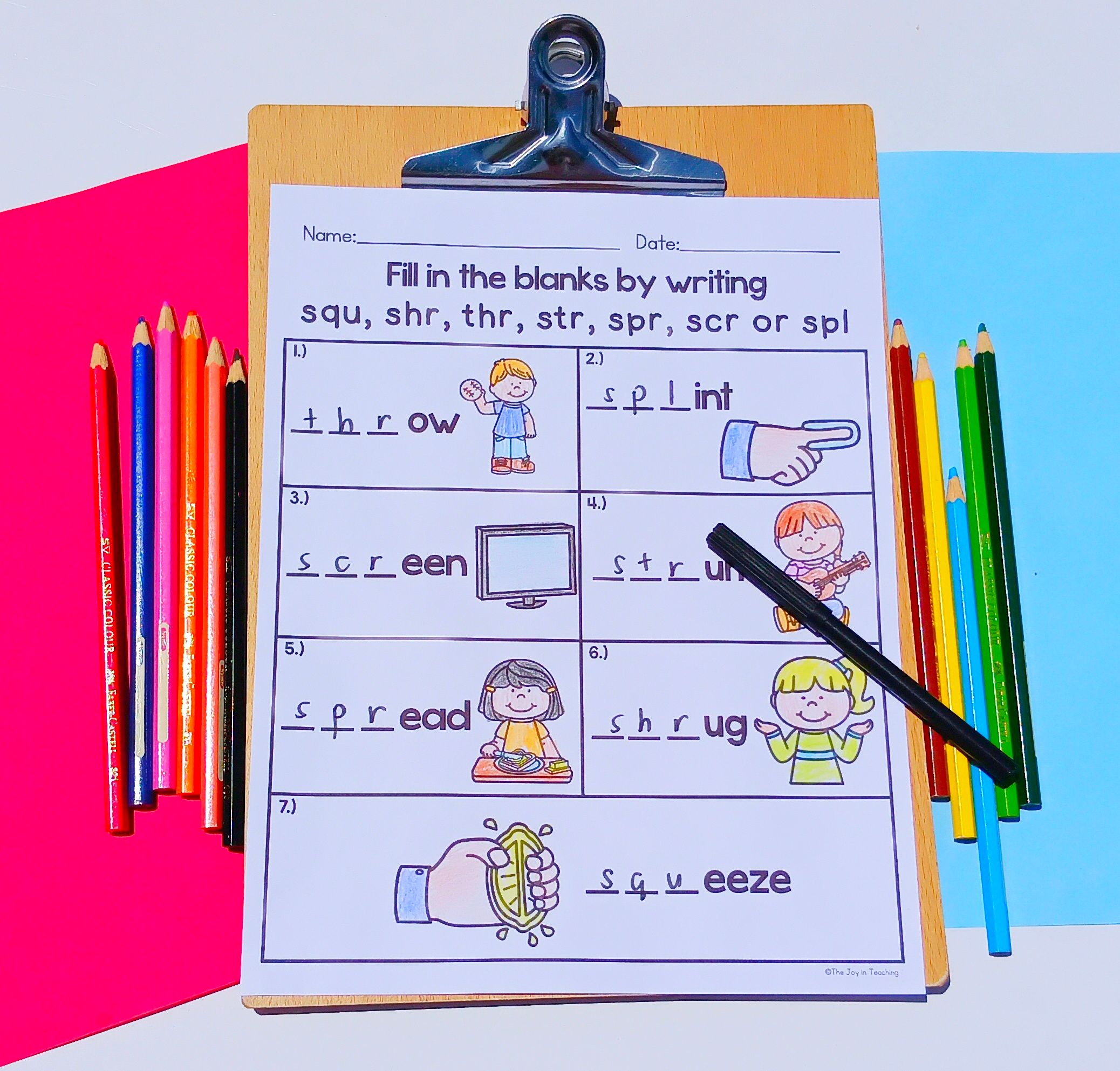
9. Long Vowel Rhyming Worksheet This one checks if students can recognize long vowel sounds and match rhyming words.
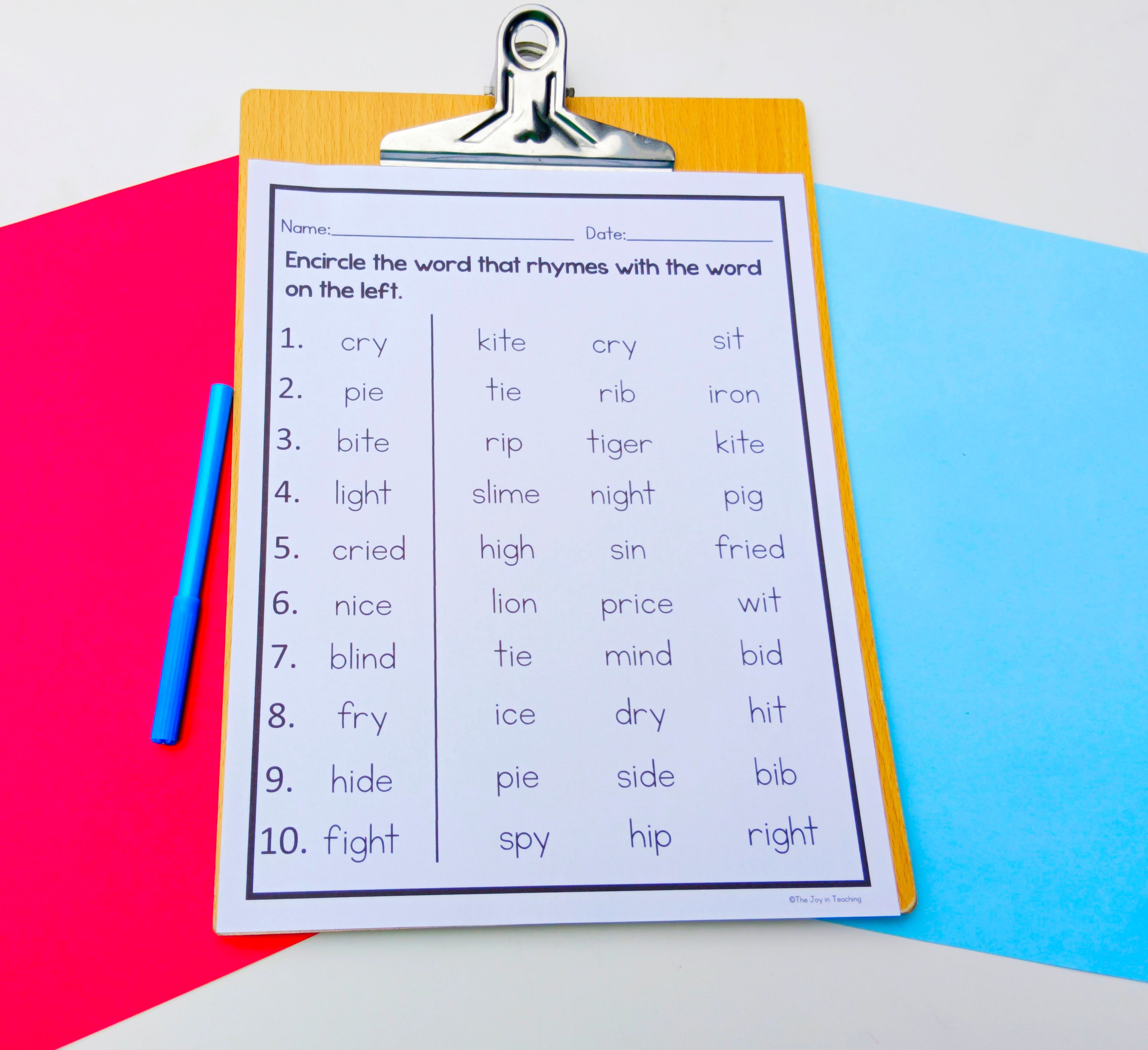
How to Use This Phonics Assessment (Without Losing Your Mind) Let’s talk logistics. Here’s how to get started without needing a second cup of coffee: Materials Needed:
- Paper of your choice
- A pencil
- Your favorite teacher pen (for grading, of course)
The Process:
- Download the free resource.
- Print the worksheets on paper—any kind works!
- Administer them during centers, small group, or 1:1.
- Review the results and identify areas of strength and need.
Tip: Laminate a few of the pages and turn them into reusable center activities. That way, they serve double duty—assessment and extra practice.
Suggestions for Making Phonics Assessment Fun (Yes, Fun!) Let’s be honest—students don’t typically cheer for assessments. But there are ways to make them more enjoyable and less intimidating:
- Use funny voices while reading the directions. Pirate voice? Check. Robot mode? Absolutely.
- Call it a game or “mission” instead of an assessment. Spy kids on a decoding mission? Yes, please.
- Give stickers or a simple reward for doing their best. (Bonus: You’ll see some top-tier coloring skills.)
- Pair assessments with movement breaks. After they finish a page, let them hop like a bunny or do a quick stretch. Brains need breaks!
What Teachers Are Saying Still not sure? Here’s what other educators like you have to say:
⭐⭐⭐⭐⭐ Sarah B. says, “I used this resource so I could explain to students what assessments were and how they would be used for progress monitoring. The students enjoyed it."
⭐⭐⭐⭐⭐ Alexandra K. says, “Very helpful tool in keeping track of students’ IEP goals."
⭐⭐⭐⭐⭐ Maira A. says, “The wonderful resource to assess students' phonetic knowledge in the beginning of the year." We love hearing how teachers are using this resource to make assessment less stressful and more meaningful.
Why You’ll Love This Resource ❤️
- No Prep Required – Just print and go.
- Covers Key Skills – From alphabet to long vowels, all the phonics basics are covered.
- Perfect for K-2 – Whether your students are beginners or ready for blends and digraphs.
- Flexible Use – Great for assessments, homework, practice, or even centers.
Final Thoughts: Phonics Doesn’t Have to Be Scary Assessments don’t have to be complicated or stressful—for you or your students. With the right tools and a little bit of humor (and maybe a cookie bribe or two), you can make phonics assessments a regular, positive part of your teaching routine. So go ahead—grab your freebie, pour that cup of coffee, and check off one more thing on your never-ending to-do list. 📎 Download the FREE Phonics Assessment Worksheet Let the phonics fun begin!
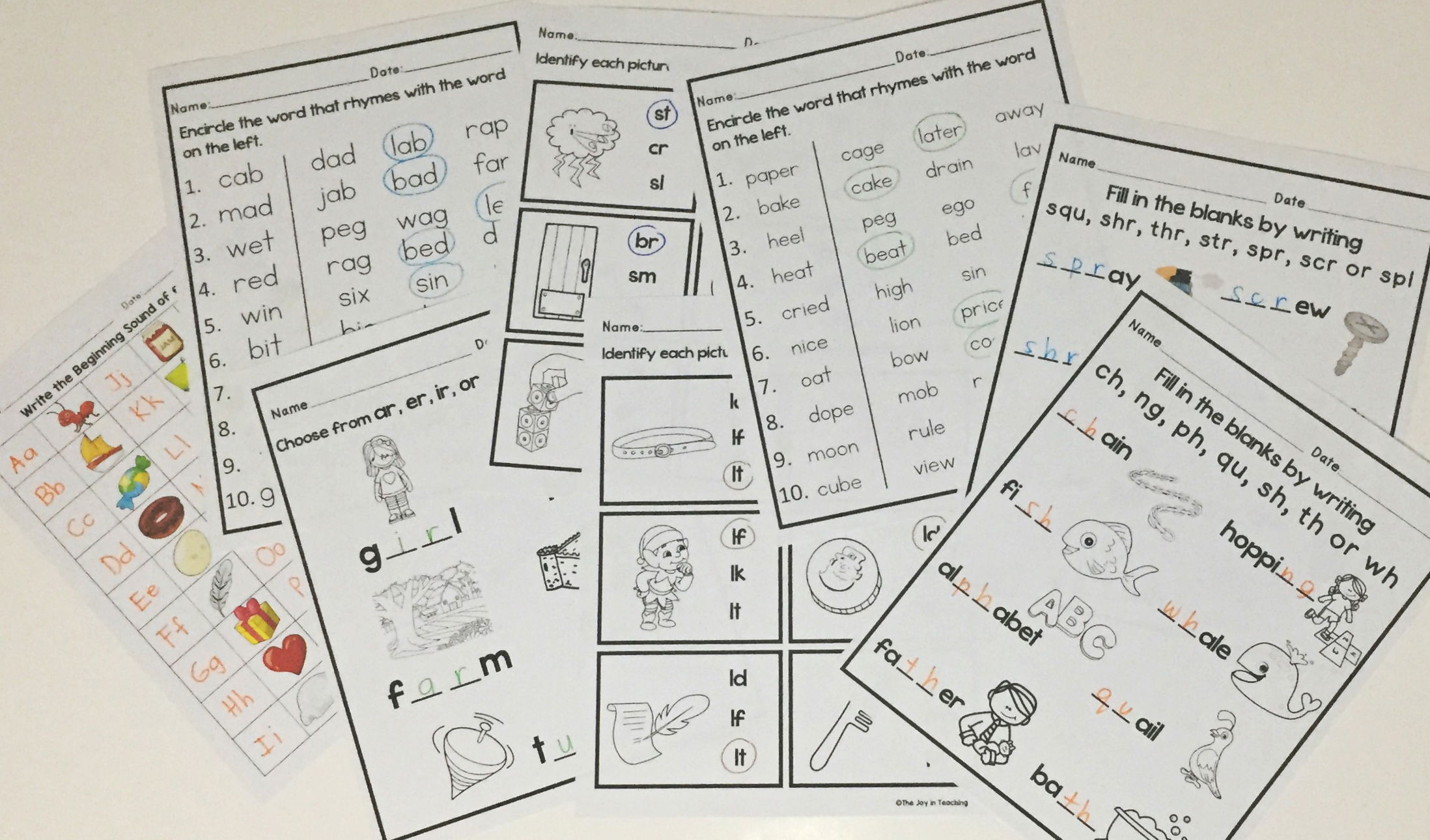
Follow Me for More Teaching Tips with Joy For more tips, resources, and a daily dose of teaching joy, follow me on:
Got questions or want to share your success stories? Drop me an email at thejoyinteaching@gmail.com. I love hearing from fellow educators and parents! Happy Teaching!
Joy Medalla
The Joy in Teaching 💛